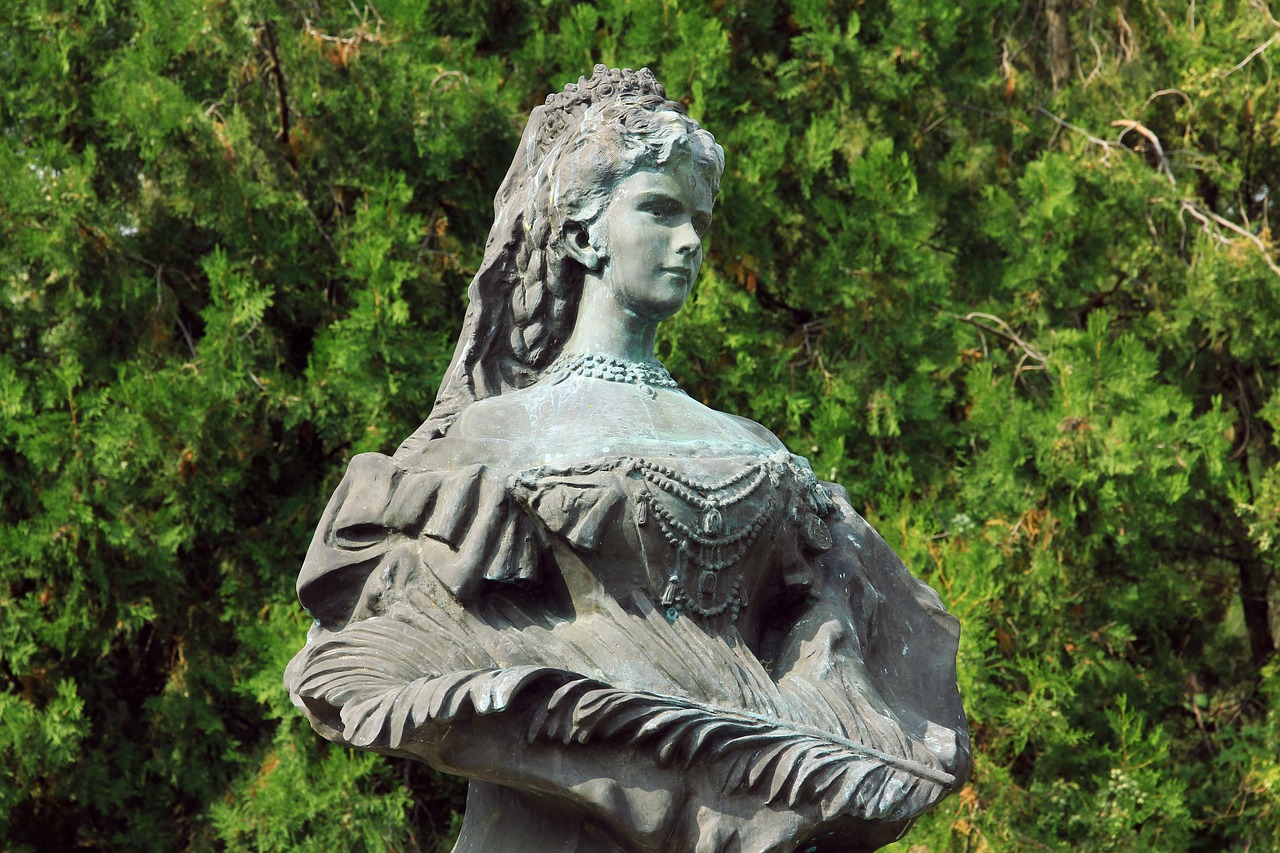The Empress Tree, also known as Paulownia, can grow rapidly, attaining heights of 10 to 15 feet within the first year under optimal conditions. This fast growth makes it an excellent choice for biomass production and providing shade.
The Empress Tree is a deciduous tree native to China, renowned for its exceptional growth rate and versatility. It is often planted for various purposes, including timber production, erosion control, and as an ornamental tree due to its beautiful flowers. Its ability to thrive in diverse soil types and climates adds to its appeal. One significant advantage of the Empress Tree is its rapid biomass accumulation, making it an environmentally friendly option for land restoration and carbon sequestration.

In addition to biomass production, the Empress Tree is widely used for shade. With its large leaves and expansive canopy, it provides ample cover, making it ideal for parks, gardens, and urban landscapes. Its shade not only enhances aesthetics but also helps in reducing heat in surrounding areas, contributing to energy savings in nearby buildings.
Growth Characteristics
The growth characteristics of the Empress Tree are influenced by several factors, including soil quality, water availability, and climate conditions. On average, the tree can grow 10 to 15 feet in the first year if provided with adequate care and optimal conditions. In subsequent years, its growth may slow slightly but can still reach impressive heights of up to 40 feet within a few years.
To understand the growth potential of the Empress Tree better, the following table outlines some critical growth metrics:

| Age (Years) | Height (Feet) | Diameter (Inches) | Biomass (Pounds) |
|---|---|---|---|
| 1 | 10-15 | 1-2 | 200-400 |
| 2 | 15-25 | 2-4 | 500-800 |
| 3 | 25-35 | 4-6 | 1000-1500 |
| 5 | 35-40 | 6-10 | 2000-3000 |
This table highlights the substantial growth that can be expected over the years. The Empress Tree’s rapid biomass gain makes it a viable choice for sustainable forestry practices. Farmers and landowners can utilize these trees not only for timber but also for improving soil health through organic matter addition when leaves and branches are pruned or shed.
Furthermore, Empress Trees are known for their adaptability to different environmental conditions. They can grow well in various soil types, including clay, loam, and sandy soils. However, they prefer well-drained soils with a pH level between 6.0 and 8.0. Regular watering during their initial planting phase is crucial to ensure healthy root development and overall growth.
The tree also requires ample sunlight to thrive. Ideally, it should be planted in areas with full sun exposure to maximize its growth potential. In shaded conditions, growth may be stunted significantly. Therefore, when planting Empress Trees for biomass or shade, careful site selection is essential.

In addition to their rapid growth and adaptability, Empress Trees are relatively low-maintenance once established. They are resistant to many pests and diseases, which makes them suitable for sustainable farming practices. Regular pruning can help maintain their shape and encourage denser foliage for better shade coverage.
Overall, the Empress Tree is an excellent option for those seeking fast-growing trees that provide both biomass and shade. Its unique characteristics allow it to serve multiple purposes, contributing positively to both ecological and economic benefits.
Optimal Conditions for Empress Tree Growth
To achieve the best growth rates and overall health for Empress Trees, certain environmental conditions must be met. Understanding these conditions will help maximize both biomass production and shade provision.
Soil Requirements
The soil is a critical factor in the successful growth of Empress Trees. Here are some important soil characteristics to consider:

- Drainage: Empress Trees thrive in well-drained soils. Poor drainage can lead to root rot and other issues.
- pH Level: A pH range of 6.0 to 8.0 is ideal for optimal growth. Soil testing can determine the pH level.
- Nutrient Content: Fertile soils rich in organic matter will support faster growth. Incorporating compost can improve soil quality.
Watering Practices
Proper watering is essential, especially during the early stages of growth. Here are some tips for effective watering:
- Initial Watering: After planting, provide deep watering to establish roots. This may involve watering every few days for the first few weeks.
- Seasonal Needs: Adjust watering frequency based on seasonal rainfall. During dry periods, ensure adequate moisture is maintained.
- Mulching: Applying mulch around the base of the tree can help retain soil moisture and regulate temperature.
Pest and Disease Management
While Empress Trees are generally resilient, they can be susceptible to certain pests and diseases. Being proactive in management can prevent significant issues.
Common Pests
Some pests that may affect Empress Trees include:
- Tree Borers: These insects can damage the trunk and branches. Regular inspections can help catch infestations early.
- Aphids: These small insects suck sap from leaves, leading to stunted growth. They can be controlled with insecticidal soap.
- Scale Insects: Scale can cause yellowing of leaves. Horticultural oil can be effective in managing these pests.
Disease Prevention
Preventive measures help reduce the risk of diseases affecting Empress Trees:
- Fungal Infections: Ensure good air circulation by spacing trees appropriately and avoid overhead watering to reduce humidity.
- Root Rot: Avoid planting in areas with poor drainage. Monitor soil moisture to prevent overwatering.
Growth Variability Factors
The growth rate of Empress Trees can vary significantly based on several factors. Understanding these can help in planning for biomass production or shade coverage.
| Factor | Impact on Growth Rate |
|---|---|
| Climate | Warmer climates promote faster growth; extreme cold can stunt development. |
| Sunlight | Trees in full sun experience better growth compared to those in shaded areas. |
| Age of the Tree | Younger trees grow faster than older ones; growth typically slows after maturity. |
| Cultivation Practices | Regular pruning and fertilization contribute to healthier and faster growth. |
Understanding these factors allows growers to create an optimal environment for Empress Trees. By addressing the elements that influence growth rates, landowners and farmers can effectively utilize this tree for biomass and shade purposes.
Cultural Practices for Enhancing Growth
Cultural practices play a vital role in maximizing the potential of Empress Trees. Some recommended practices include:
- Fertilization: Applying a balanced fertilizer in the spring can boost growth rates. Organic options include compost or well-rotted manure.
- Pruning: Regular pruning helps maintain the structure of the tree, encourages healthy growth, and enhances shade coverage.
- Pest Monitoring: Regularly inspecting trees for pests and diseases allows for timely intervention, ensuring healthy growth.
By adopting these cultural practices, growers can enhance the overall health and productivity of their Empress Trees, leading to robust biomass yields and effective shade provision.
Economic Benefits of Empress Trees
Empress Trees offer various economic advantages for landowners and farmers. Their fast growth rate and multiple uses make them a valuable asset. Understanding these benefits can help in making informed decisions about planting and managing Empress Trees.
Timber Production
The timber produced by Empress Trees is highly sought after due to its light weight and strength. Some key points regarding timber production include:
- Fast Maturity: Empress Trees can be harvested for timber within 5 to 10 years, making them a quick return on investment.
- High Value: The wood can be used for furniture, cabinetry, and construction, often fetching a premium price in the market.
- Sustainable Harvesting: With proper management, Empress Trees can be harvested sustainably, allowing for continuous production over the years.
Biomass Energy Production
As interest in renewable energy sources grows, Empress Trees present an excellent opportunity for biomass energy production. The following aspects highlight their role in this area:
- High Biomass Yield: Empress Trees have a high biomass yield per acre, making them effective for energy production.
- Carbon Sequestration: These trees absorb carbon dioxide as they grow, contributing positively to climate change mitigation efforts.
- Versatile Use: Biomass from Empress Trees can be converted into pellets, chips, or other forms of energy, providing flexibility in energy generation.
Environmental Impacts of Empress Trees
Beyond economic benefits, Empress Trees also play a crucial role in environmental sustainability. Their growth contributes to several ecological benefits.
Erosion Control
Empress Trees can be instrumental in preventing soil erosion. Key points include:
- Root Structure: The extensive root system helps stabilize soil, preventing erosion in areas prone to runoff.
- Ground Cover: The large leaves provide shade, reducing soil temperature and helping retain moisture.
- Planting on Slopes: Planting Empress Trees on sloped land can significantly decrease soil erosion rates.
Biodiversity Enhancement
The introduction of Empress Trees into an ecosystem can enhance local biodiversity. Considerations include:
- Habitat Creation: The trees provide habitat and food for various wildlife species, promoting a healthier ecosystem.
- Pollinator Support: The flowers of the Empress Tree attract pollinators like bees and butterflies, which are crucial for plant reproduction.
- Soil Improvement: Fallen leaves decompose and enrich the soil, supporting a diverse range of undergrowth species.
Challenges in Cultivation
Despite their numerous benefits, cultivating Empress Trees comes with challenges that growers should be aware of before planting.
Invasive Species Concerns
Empress Trees have been classified as invasive in some regions. Important considerations include:
- Rapid Spread: The seeds can disperse easily, leading to uncontrolled growth in non-native areas.
- Displacement of Native Species: If not managed properly, they may outcompete native flora, impacting local ecosystems.
- Regulations: Some regions have restrictions on planting Empress Trees due to their invasive potential. It is essential to check local regulations before planting.
Aesthetic and Maintenance Considerations
While Empress Trees are relatively low-maintenance, they still require some attention to ensure they reach their full potential:
- Pruning Needs: Regular pruning is needed to maintain the desired shape and remove any dead or damaged branches.
- Leaf Drop: The trees shed large leaves in the fall, which may require cleanup in landscaped areas.
- Aesthetic Impact: Some may find the large size and rapid growth overwhelming in smaller gardens or urban settings.
Cultural Significance of Empress Trees
The Empress Tree holds cultural significance in various regions. Its history and uses extend beyond practical applications.
Cultural Heritage
The Empress Tree has been part of traditional practices in regions like China for centuries. Key points include:
- Cultural Symbol: In some cultures, the tree symbolizes prosperity and good fortune due to its rapid growth and economic benefits.
- Traditional Uses: Wood from the tree has been used historically for crafting musical instruments and furniture.
- Aesthetic Value: The beautiful purple flowers attract attention and have made the tree a popular choice for ornamental planting in gardens and parks.
This rich cultural heritage adds another layer of value to the Empress Tree, making it a significant species not just economically but also socially and culturally.
Future Prospects of Empress Trees
The prospects for Empress Trees in the coming years appear promising, especially with the growing emphasis on sustainable practices and renewable resources. Their adaptability and rapid growth rate position them as a key player in various industries, including forestry, energy, and landscaping.
Advancements in Cultivation Techniques
As research progresses, new cultivation techniques are being developed that enhance the growth and sustainability of Empress Trees. Some of these advancements include:
- Genetic Studies: Research into the genetics of Empress Trees is helping identify traits that promote faster growth and disease resistance.
- Improved Propagation Methods: Techniques such as tissue culture can ensure high-quality seedlings with desirable traits, leading to more successful planting efforts.
- Precision Agriculture: The use of technology in monitoring soil conditions, water needs, and pest management can optimize the growth of Empress Trees, leading to better yields.
Incorporating Empress Trees in Agroforestry
Agroforestry systems that integrate trees with crops and livestock are becoming increasingly popular. Empress Trees can play a significant role in these systems:
- Shade Provision: They provide shade for crops and livestock, reducing heat stress and improving animal welfare.
- Soil Health Improvement: The organic matter from fallen leaves enriches the soil, benefiting surrounding crops.
- Diversity Enhancement: Integrating Empress Trees into farming systems increases biodiversity, which can improve pest management and crop resilience.
Challenges Ahead
While the future looks bright for Empress Trees, there are challenges that need to be addressed to maximize their potential:
- Regulatory Hurdles: In some regions, regulations concerning invasive species can impact the ability to plant Empress Trees. Understanding local laws is essential for prospective growers.
- Market Fluctuations: The timber and biomass markets can be volatile. Growers must stay informed about market trends to ensure their investments yield favorable returns.
- Education and Awareness: Many potential growers may lack knowledge about the benefits and challenges of cultivating Empress Trees. Educational programs can help address this gap.
Final Thoughts
The Empress Tree stands out as an exceptional species for both biomass production and shade provision. Its rapid growth, adaptability, and versatility make it an attractive option for landowners looking to maximize their land’s potential. From providing economic benefits through timber and biomass energy to enhancing biodiversity and preventing soil erosion, Empress Trees offer significant advantages.
However, successful cultivation requires careful consideration of site selection, soil quality, and pest management. By implementing best practices in cultivation and understanding the challenges involved, growers can harness the full potential of Empress Trees while contributing positively to environmental sustainability.
As we move towards a greener future, the role of Empress Trees in agroforestry and sustainable practices will likely expand. With ongoing research and advancements in cultivation techniques, these trees will continue to be a vital asset in achieving ecological balance and economic prosperity.
For those considering planting Empress Trees, now is an opportune time to explore their multifaceted benefits. Engaging with local agricultural experts and participating in educational programs can further facilitate successful outcomes.
